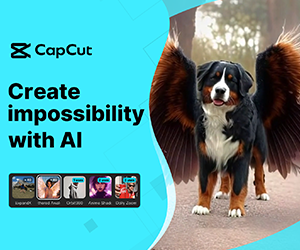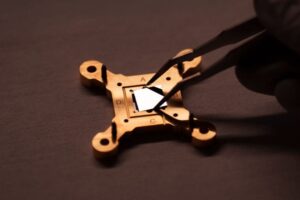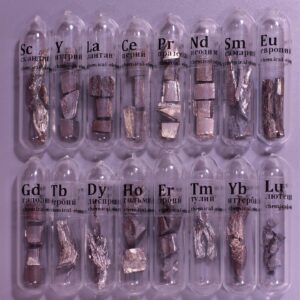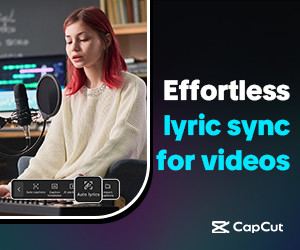 Pin
Pin Image from Tilly Lockey / Instagram
The realm of prosthetics has witnessed a monumental breakthrough with the introduction of the world’s most advanced bionic arm. This state-of-the-art device not only restores functionality to amputees but also introduces features previously confined to the realm of science fiction. Developed by Open Bionics, the Hero Arm PRO stands out with its wireless capabilities, waterproof design, and the remarkable ability to operate even when detached from the user. This innovation signifies a paradigm shift in assistive technology, merging human intent with robotic precision to offer users an unprecedented level of autonomy and control.
One of the most striking features of the Hero Arm PRO is its detachable hand that can be remotely controlled. This functionality allows users to perform tasks that were previously challenging or impossible, such as retrieving objects from hard-to-reach places. The hand’s ability to “crawl” across surfaces brings a new dimension to prosthetic utility, offering practical solutions to everyday challenges faced by amputees. This development not only enhances the user’s physical capabilities but also contributes significantly to their psychological well-being by promoting independence.
The integration of wireless electromyography (EMG) electrodes, known as MyoPods, is another groundbreaking aspect of this bionic arm. These sensors detect muscle signals from the residual limb, translating them into precise movements of the prosthetic hand and fingers. This seamless communication between the user’s nervous system and the prosthetic device ensures intuitive control, making the prosthetic feel like an extension of the user’s own body. Such advancements underscore the rapid progress in neuroprosthetics, where the boundaries between human and machine continue to blur, offering hope and enhanced quality of life to individuals with limb loss.
Table of Contents
Unveiling the Hero PRO: A Game-Changer in Bionic Prosthetics
 Pin
Pin Image from Hero Pro Official site
Open Bionics has introduced the Hero PRO, a bionic arm that stands out as the world’s most advanced in its category. Crafted from durable Nylon PA12 using cutting-edge 3D printing technology, the Hero PRO combines strength with lightweight design. Its waterproof nature (IPX7-rated) ensures users can engage in various activities without concern for moisture damage.
The arm’s 360-degree wrist rotation and flexible movement capabilities provide a range of motion that closely mimics natural limb function. Additionally, the Hero PRO boasts a detachable hand that can be remotely controlled, allowing users to perform tasks even when the hand is separated from the arm. This feature is particularly beneficial for retrieving objects from confined spaces or handling delicate items. The integration of MyoPods, wireless electromyography (EMG) sensors, enables intuitive control by detecting muscle signals from the residual limb, translating them into precise hand and wrist movements.
This seamless communication between the user’s nervous system and the prosthetic device enhances the overall user experience, making the Hero PRO not just a replacement but an extension of the human body.
The Evolution and Impact of the World's Most Advanced Bionic Arm
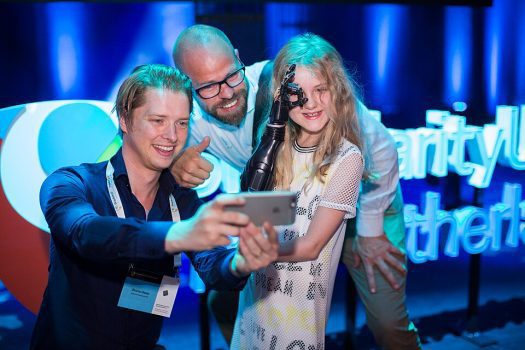 Pin
Pin Image from Wikimedia Commons
The development of the Hero PRO by Open Bionics represents a significant milestone in the evolution of prosthetic technology. Over four years and with a $2.5 million investment, the company collaborated with over 1,000 users to create a bionic arm that is twice as strong and fast as its predecessors. This collaborative approach ensured that the Hero PRO addressed real-world needs and challenges faced by amputees.
The arm’s waterproof design, allowing submersion up to three feet for 30 minutes, and its lightweight construction enhance user comfort and versatility. Furthermore, the integration of MyoPods, wireless electromyography sensors, facilitates intuitive control by detecting muscle signals from the residual limb. This seamless communication between the user’s nervous system and the prosthetic device offers a level of autonomy previously unattainable. The Hero PRO’s ability to function independently when detached, combined with its advanced features, not only restores functionality but also empowers users, marking a transformative moment in prosthetic technology.
Tilly Lockey: Embracing Life with the World's Most Advanced Bionic Arms
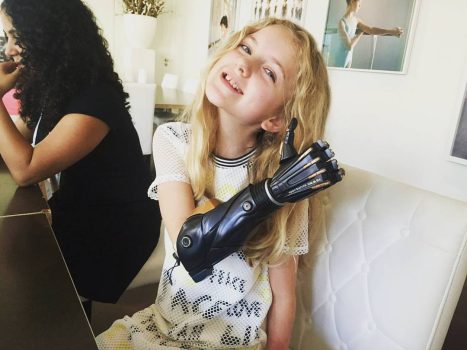 Pin
Pin Image from Tilly Lockey / Instagram
At just 19 years old, Tilly Lockey has become a symbol of resilience and innovation in the realm of prosthetic technology. After losing both hands to meningitis as a toddler, Tilly has been instrumental in the development and adoption of advanced bionic arms, particularly the Hero Arm by Open Bionics. Her journey began at the age of eight when she was first fitted with a Hero Arm, marking the start of a transformative relationship with prosthetic advancements. Tilly’s proactive involvement has not only enhanced her own quality of life but has also paved the way for improvements that benefit countless others in the limb-different community.
The latest iteration of her prosthetic journey involves the Hero PRO, hailed as the world’s most advanced bionic arm. This cutting-edge device boasts features such as wireless control, waterproof capabilities, and the remarkable ability to function independently when detached. Tilly’s firsthand experiences and feedback have been pivotal in refining these features, ensuring they meet real-world needs. She has demonstrated the arm’s capabilities on platforms like ‘This Morning,’ showcasing how the detachable hand can be remotely operated to perform tasks, a functionality that seemed purely fictional until now.
Beyond the technological marvels, Tilly’s embrace of her bionic arms has had profound personal and societal impacts. She views her prosthetics not merely as tools but as extensions of her identity, often customizing them to match her outfits and expressing her unique style. This approach challenges traditional perceptions of prosthetics, shifting the narrative from one of limitation to one of empowerment and individuality. Tilly’s story underscores the transformative potential of advanced prosthetic technology, illustrating how it can restore functionality, boost confidence, and inspire a reimagining of what it means to live with limb differences.
How the Detachable Hand Feature Works and Why It Matters
The most mind-blowing part of the world’s most advanced bionic arm might be its detachable, remote-controlled hand. No, this isn’t a Marvel movie. This is real. When the hand is removed from the main arm unit, it doesn’t just sit there — it moves. It can “crawl” across a table, grip objects, and perform gestures on its own, like it’s got a brain of its own. But in truth, it’s the engineering and wireless connectivity behind it that’s doing the magic. A small joystick or app gives users the ability to steer or control the hand’s movement remotely.
Why is this useful? For people like Tilly Lockey or others with upper limb differences, this tech isn’t just cool — it’s empowering. Reaching for something that’s stuck behind a desk, or grabbing something fragile without having to twist your body awkwardly? The detachable hand can go there for you. It helps with real-life challenges and boosts independence. It’s a feature no one thought possible a few years ago, and now it’s changing lives daily.
What Makes the Hero Arm PRO Different from Other Prosthetics
There have been prosthetic arms before, even some with robotic fingers. But nothing comes close to the level of control, precision, and freedom that the Hero Arm PRO delivers. Most prosthetics require cables, straps, or bulky setups. Many are uncomfortable, stiff, and hard to personalize. What makes this the most advanced bionic arm is not just the cool tech—it’s how it actually fits into a person’s daily life.
This arm doesn’t just look futuristic—it feels futuristic. It uses wireless EMG sensors called MyoPods that pick up signals straight from the user’s muscles. That means when someone like Tilly thinks about moving a finger, the bionic arm just…does it. It rotates 360 degrees, is fully waterproof, and doesn’t need wires going into your skin. It’s also 3D-printed and customized to each person’s size and preferences, which means better comfort and less fatigue.
This level of seamless control and freedom is rare even in high-end prosthetics. That’s why the Hero PRO is setting a new standard, not just for prosthetic arms—but for what we think is even possible.
How 3D Printing Is Revolutionizing Prosthetics Like the Hero PRO
One of the biggest reasons the most advanced bionic arm exists today is because of 3D printing. Open Bionics has leveraged this technology to make something that used to take months and cost a fortune into something faster, lighter, and more personal. Every Hero PRO is made with 3D-printed parts, especially using Nylon PA12, which makes it strong but lightweight. That’s a huge deal when someone’s wearing it for hours every day.
Traditional prosthetics are bulky, generic, and expensive to modify. But with 3D printing, each arm is built to fit the person wearing it — kind of like a custom sneaker, but for your limb. It also allows for quick upgrades or style changes. If someone wants their bionic arm to look like Iron Man’s or match their jacket, it can be done. It’s not just a limb anymore; it becomes a part of your identity.
This approach has made advanced prosthetics more accessible and way more functional. It’s not just about restoring movement. It’s about giving people back control, confidence, and comfort.
Emotional and Psychological Impact of Wearing the Most Advanced Bionic Arm
For people who’ve lost limbs — especially at a young age — the emotional journey is just as hard as the physical one. It’s not just about grabbing a cup or tying shoelaces. It’s about feeling “normal” again, being able to do what others take for granted, and facing the world without shame or fear. That’s why the Hero PRO isn’t just a gadget — it’s a lifeline.
Tilly Lockey has spoken openly about how wearing her bionic arms changed the way she sees herself. Instead of hiding her limb difference, she proudly shows off her prosthetic, even decorating it with cool designs. That’s a massive shift in mindset. It takes a person from feeling limited to feeling empowered — not because the limb makes them “whole” again, but because it gives them the tools to express who they are, without limits.
This is where tech meets humanity. The world’s most advanced bionic arm is giving people more than movement — it’s restoring their identity, confidence, and pride in who they are.
Future Possibilities
What we’re seeing with the Hero PRO is just the beginning. The fact that a 19-year-old can wear the most advanced bionic arm and control a detachable, moving hand already feels like science fiction. But researchers and engineers aren’t stopping here. The next big leap? Direct brain control. Some labs are already experimenting with brain-computer interfaces (BCIs) that allow users to think a movement and make it happen instantly, without even using muscle signals.
Another exciting area is sensory feedback. Right now, most bionic arms don’t let users “feel” what they touch. But scientists are working on adding sensors that can send signals back to the brain—so a person could know if something is hot, cold, soft, or rough. That would make the prosthetic feel more like a real limb.
We’re also seeing AI play a role. Smart bionic arms might soon learn your daily habits and adjust grip strength or posture automatically. It’s wild to think about, but with how fast things are moving, the future of prosthetics is closer than we think.
How the Most Advanced Bionic Arm is Changing Lives Worldwide
The impact of the Hero PRO and similar bionic arms goes far beyond individual users like Tilly Lockey. Around the world, people with limb differences are gaining newfound independence, confidence, and joy. These prosthetics are transforming daily tasks—everything from typing on a keyboard to cooking dinner becomes possible again with ease.
Organizations and clinics are working to make these advanced bionic arms more accessible, especially in regions where traditional prosthetics are limited or unavailable. Open Bionics even offers open-source designs to encourage innovation and lower costs globally. This means more people, regardless of their location or background, can benefit from cutting-edge technology that was once out of reach.
By breaking barriers and challenging what’s possible, the most advanced bionic arm is not just a device—it’s a movement. A movement that’s rewriting the story of disability into one of empowerment, creativity, and limitless potential.
FAQs
The Hero PRO stands out due to its lightweight 3D-printed design, waterproof features, 360-degree wrist rotation, and the unique detachable hand that can be remotely controlled. It also uses wireless MyoPods that pick up muscle signals for intuitive, natural movement.
Tilly Lockey is a 19-year-old who lost both hands to meningitis as a toddler. She has been a key user and ambassador of Open Bionics’ Hero Arm, providing valuable feedback that helped shape the most advanced bionic arms available today.
The detachable hand can be removed from the main arm unit and controlled wirelessly via a joystick or app. It can move independently, crawl across surfaces, and grip objects, giving users the ability to perform tasks remotely.
Yes, the Hero PRO is IPX7-rated waterproof, meaning it can be submerged in water up to three feet deep for about 30 minutes without damage, allowing users to wash hands or be caught in the rain without worry.
3D printing allows each bionic arm to be custom-made for the user’s unique size and style preferences. It also makes the arms lighter, stronger, and more affordable while enabling quick modifications and personalized designs.













